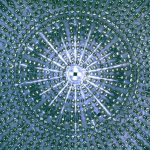Physicists spot a new class of neutrinos from the sun0
- From Around the Web, Space
- June 29, 2020
The Borexino experiment detected particles from our star’s second-most important fusion process

The Borexino experiment detected particles from our star’s second-most important fusion process

It’s too soon to tell if we’re already in Solar Cycle 25.

The sun appears to be far less active than similar stars in terms of brightness variations caused by sunspots and other phenomena – a “boring” personality, according to scientists, that may not be a bad thing for us Earthlings.

The sharpest-ever photos of the sun, captured by NASA’s High-Resolution Coronal Imager, Hi-C, have revealed the fine magnetic threads of super heated plasma that make up the sun’s outer layer.

A new probe built by NASA and the European Space Agency set off on a blazing hot journey to the sun on Sunday to take the first close-up look at the star’s polar regions, a mission expected to yield insight into how solar radiant energy affects Earth.

Solar Orbiter, a new collaborative mission between the European Space Agency (ESA) and NASA to study our Sun, launched at 05:03 CET on February 10, 2020 (11:03 p.m. EST on February 9) on an Atlas V 411 rocket from Launch Complex 41 at Cape Canaveral Air Force Station in Florida. At 06:03 CET (12:24 a.m. EST), mission controllers at the European Space Operations Centre in Darmstadt, Germany, received a signal from the spacecraft indicating that its solar panels had successfully deployed. In the first two days after launch, Solar Orbiter will deploy its instrument boom and several antennas that will communicate with Earth and gather scientific data.

Scientists hope the telescope will capture the imagination like ‘science fiction’

This image is the first high-resolution shot from the 4-meter Daniel K. Inouye Solar Telescope in Hawai’i.

Solar Minimum is becoming very deep indeed.

Could northern summer 2019 go down in history as “the summer without sunspots”?